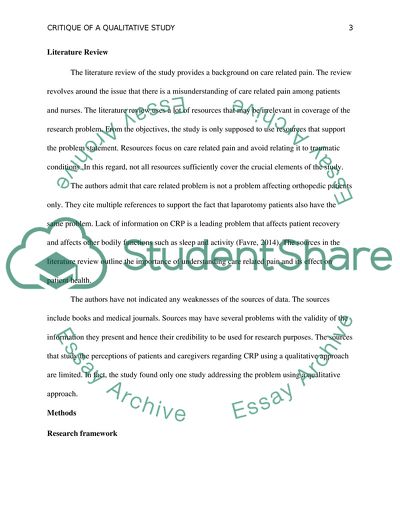Cite this document
(Research Critique, part 1 Paper Example | Topics and Well Written Essays - 1000 words, n.d.)
Research Critique, part 1 Paper Example | Topics and Well Written Essays - 1000 words. https://studentshare.org/nursing/1862686-care-related-pain-in-rehabilitation-after-orthopedic-trauma
Research Critique, part 1 Paper Example | Topics and Well Written Essays - 1000 words. https://studentshare.org/nursing/1862686-care-related-pain-in-rehabilitation-after-orthopedic-trauma
(Research Critique, Part 1 Paper Example | Topics and Well Written Essays - 1000 Words)
Research Critique, Part 1 Paper Example | Topics and Well Written Essays - 1000 Words. https://studentshare.org/nursing/1862686-care-related-pain-in-rehabilitation-after-orthopedic-trauma.
Research Critique, Part 1 Paper Example | Topics and Well Written Essays - 1000 Words. https://studentshare.org/nursing/1862686-care-related-pain-in-rehabilitation-after-orthopedic-trauma.
“Research Critique, Part 1 Paper Example | Topics and Well Written Essays - 1000 Words”. https://studentshare.org/nursing/1862686-care-related-pain-in-rehabilitation-after-orthopedic-trauma.


